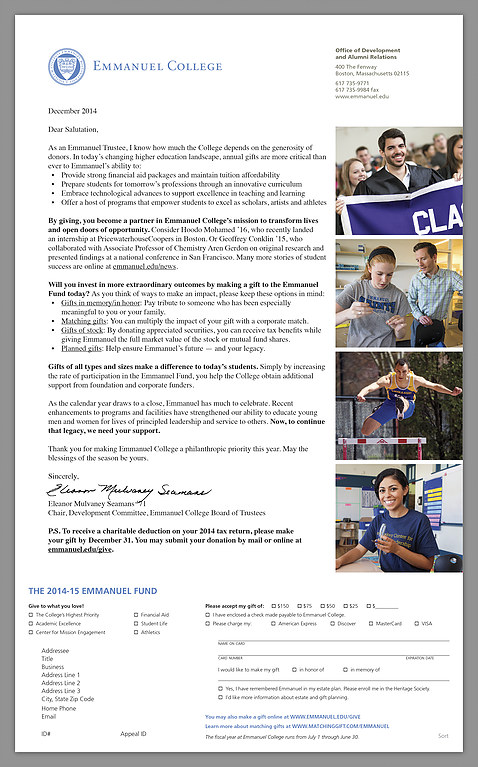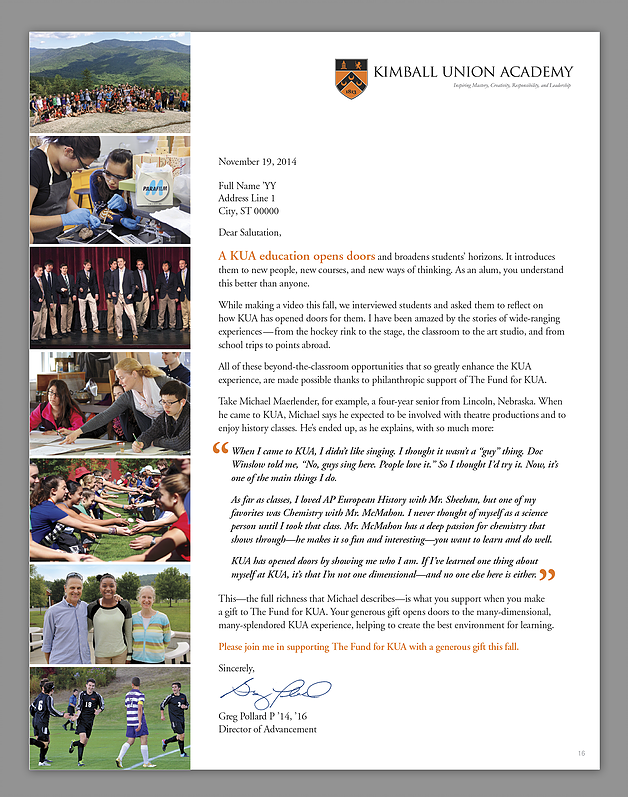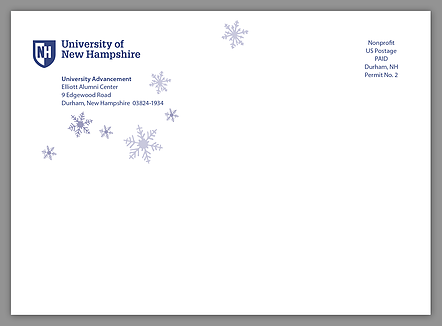Add some muscle to your next appeal letter to help it stand out in a crowded mailbox.
During the holiday season, everything that comes into your mailbox, from bills to credit card offers, are adorned in festive colors and glitter. So, it helps to add something special to an appeal letter to ensure that it will stand out from the colorful crowd.
Have your next appeal letter move into the spotlight. Follow these 5 fundraising appeal hacks:
1. Include images in your appeal letter:

Adding photos to the body of the letter helps to give a face to the story, to the need, and to the reason a donor is giving. Photos also help engage a reader in the letter by helping them make a personal connection to it.
2. Add a colorful buck slip alongside your appeal letter:

This mailing insert, approximately the size of a dollar bill (which is how it gets its name), provides room for additional graphics, images, and appeal information that can help enumerate the impact of a donation.
3. Use color and unique typography in the body of your appeal letter:

By adding color and typographical emphasis, the reader can easily find the most important parts of your appeal letter. This also helps to break apart larger blocks of text to be easier to read and thus keeps their attention longer.
4. Add artwork or a tagline to the outer envelope:

The envelope is an important part of the overall appeal package, but is so often overlooked (both during the design process and once it’s in the mailbox). The design of it helps to encourage the donor to open it.
5. Personalize the letter by including the following:
- The recipient’s last gift amount: this helps to remind the donor of how much they previously gave and also gives them a point of reference for another gift.
- A targeted ask amount: by personalizing the appeal letter with a specific ask for each letter, rather than a general ask, this helps to give the donor an understanding of how they can specifically help.
- The recipient’s class year: by referencing a specific year, you help remind them of their experiences at the school and the reasons for giving back.
- Add a P.S. line that repeats the call to action: use this important part of the letter to summarize the entire message – the ask, deadline, and call to action – so that when the reader’s eyes go to the bottom of the page, they have all the information.
What techniques have you used? Connect with us and let us know.

